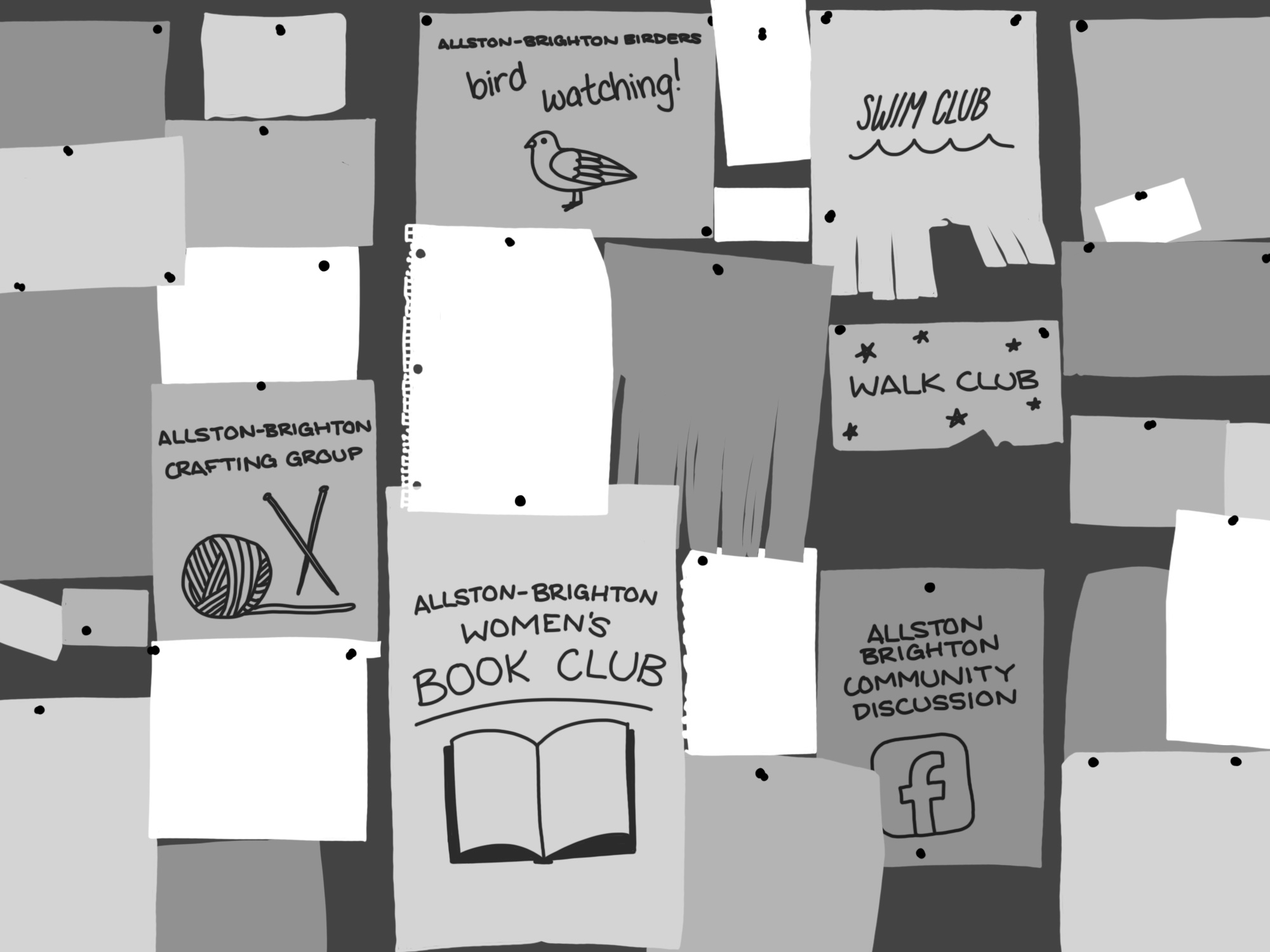Allston-Brighton has become home to a variety of clubs aiming to connect neighbors with shared interests, providing young adults with the opportunity to build community should they seek it.

Anne Heaney moved to the Allston-Brighton area a year and a half ago. Last May, in a bid to meet new people, Heaney found a dormant Facebook group advertising a local women’s book club and “brought it back to life.”
Kickstarting the Allston-Brighton Women’s Book Club, where members discuss books and often meet in local restaurants, has made a “huge impact” on Heaney’s life, she said.
“It’s really hard to make friends as an adult when you’re not in college,” said Heaney. “This has been a really good way to meet people that … my path would never have crossed with.”
The club advertises itself to the Allston-Brighton community through the Allston-Brighton Community Discussion group on Facebook, a platform Heaney said community groups still use despite Facebook’s decline amongst Gen Z, according to a 2022 Pew Research Center survey. The ABCD has amassed over 7,200 members who engage in conversation over neighborhood activities posted on the page.
The Allston-Brighton Crafting Group, founded by Allison Ziebka-Viering, uses the ABCD and word-of-mouth to recruit interested crafters and advertise events.
“We try and provide a platform where they can facilitate meet-ups and provide resources for people,” said Ziebka-Viering, who said the club caters to an array of artistic activities and abilities, hosting events like knitting and crochet sessions for beginners and supply swaps.
Ziebka-Viering considers the club to be an “avenue” through which people can create connections with “like-minded” individuals.
“When I moved up here, especially when I graduated university, it was hard to get to know people in the community … especially after you’re 30 years old, sometimes it can be hard,” Ziebka-Viering said. “It really provides an opportunity for people to find other people of similar interests.”
However, Ziebka-Viering wrote that beyond the two libraries, the neighborhood lacks free community spaces, so finding places to meet is one of their “biggest issues.”
While the craft club attracted a “good amount of recurring members,” Ziebka-Vierring does not see “as much engagement proportional to the membership.”
“I think that’s always a challenge when it comes to clubs … getting people to motivate themselves to get involved,” Ziebka-Viering said.
The Allston-Brighton community also has a range of clubs for outdoors activities, such as a reservoir walk club, a swim group and a bird-watching community.
Sarah Iwany, a nanny residing in Allston-Brighton, said she noticed many bird-watching clubs in the area hosted trips that were far away, expensive, or at an inconvenient time. So, Iwany founded a new club, the Allston-Brighton Birders.
“I wanted to create something that was local and accessible for people who don’t have access to a vehicle, and who do have to work full-time and value … sleeping in on the weekends,” Iwany said.
Iwany led 25 bird walks last year, and 380 people have joined the Birders’ discussion group on Facebook since it started.
“The goal is just to meet people in the area that have similar interests and give myself an excuse to get moving on the weekends and go outside and look at birds and have a social experience,” Iwany said.
Some residents find interest clubs to be an effective way to organically meet people their age in Allston-Brighton.
“From my perspective, there’s not as [many] bar nights, or things like that, that people go to that aren’t college-focused,” said Dayna Mann, a member of the Allston-Brighton Women’s Book Club. “I think having a space that was specifically targeted towards a mid- to late-20s crowd was critical.”
Mann said the Allston-Brighton could vamp up the social scene by getting “young people who are like-minded in the same space,” something she said isn’t being taken advantage of by businesses in the area.
Ajanette Chan Tack, assistant professor of sociology and public policy at Northeastern University, said the mid-20s and 30s are an “age range of great existential crisis.”
“Up until college … you have structured, institutionalized opportunities for getting together,” Chan Tack said of those who are able to attend college. “When you’re out in the world of young adulthood, you suddenly become pretty atomized.”
Chan Tack also said building a social network as a young person is difficult, especially with a recent decrease of social communities.
“Since the 1950s, there’s been a lot of discussion about the decline of community in America,” said Chan Tack, attributing this to a “decline of religiosity,” “increase of women in the workforce,” and the amplified “difficulty of sustaining [an] economic existence.”
In response to this, Chan Tack said community clubs and organizations are “essential for neighborhood vitality.”
“They are really important for making people have a sense of belonging [and] connecting people to each other,” Chan Tack said. “Not just over the focus task that the group is about, whether it’s knitting or books, but it tends to expand out into other things, because human beings are multi-dimensional.”





















































































































